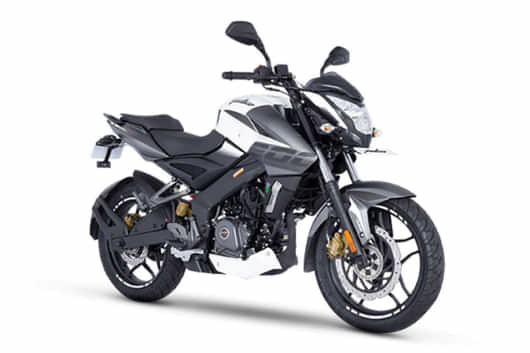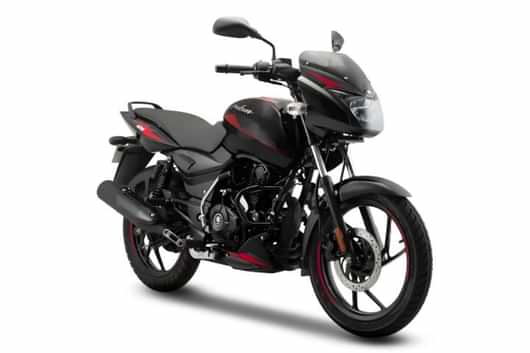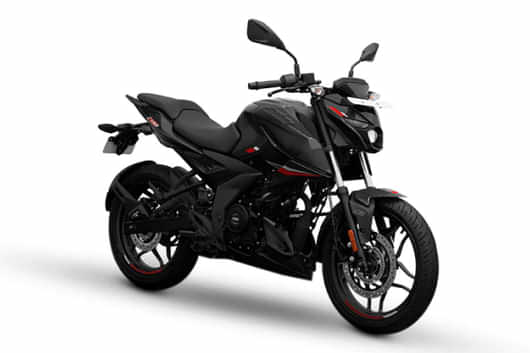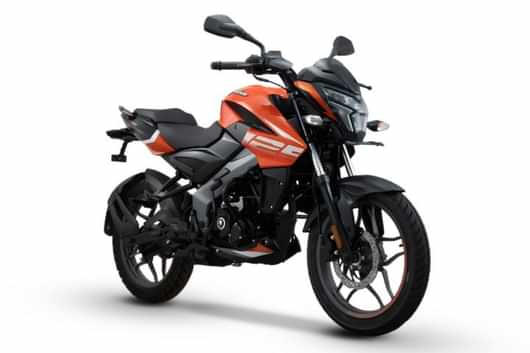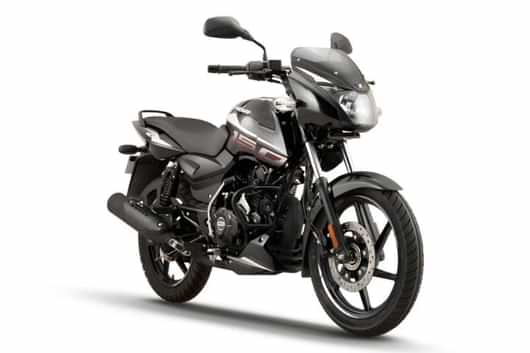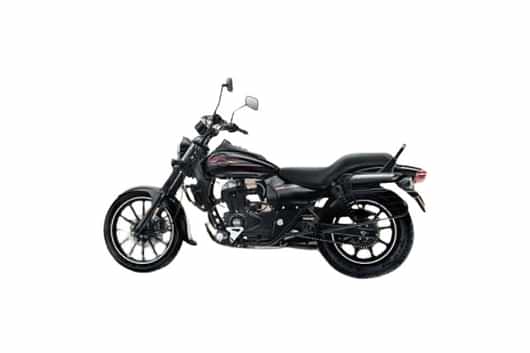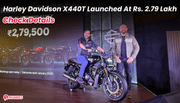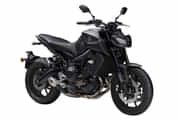
KEY HIGHLIGHTS
- The Pulsar NS400Z has just received an important update.
- The 390 Duke and the Speed 400 have carried on unchanged for a while.
- All three bikes come with a different character.
The Bajaj Pulsar NS400Z received a major update recently, which gives it more power and improves its performance, while keeping mostly everything else the same. We also know how Bajaj has two more motorcycles in the 400cc category, but from different families; the KTM 390 Duke and the Triumph Speed 400.
This does make for an interesting comparison, measuring these three motorcycles related to each other but differing in purpose and nature. Before going into the finer details though, make sure to join the 91wheels WhatsApp Community to keep up with the latest news and automotive updates.
Also read: 2025 Yamaha FZ-X Hybrid Launched At Rs 1.49 Lakh!
2025 Bajaj Pulsar NS400Z Vs KTM 390 Duke Vs Triumph Speed 400; Design

Design-wise, while the Pulsar and the Duke certainly lean towards a sharp and modern design, the Speed 400 goes for a different approach. The 390 Duke, in particular draws a lot of attention even almost two years after the third-gen model was launched, and a lot of that has to with the 1390 Super Duke-inspired design, looking far more muscular and aggressive with its extended tank shrouds and overall sharp body panels.
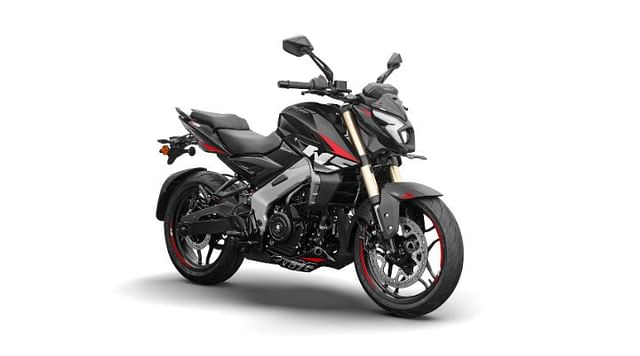
The NS400Z is the biggest Pulsar yet, and it will certainly catch the eye of someone whose heart lusts for the Orange menace, but their pockets do not allow them that liberty. Derived from the NS200, the Pulsar NS400Z bears a certain family resemblance, with the the shape of the headlight featuring different DRLs, but the overall sharply-designed motorcycle has glimpses of the N250 in it as well, when viewed from certain angles.

The Speed 400 follows a completely different school of thought, with its smoother and cleaner design, and a more neo-retro classic approach. This is a design that will be appreciated by those who aren't exactly looking for something snazzy, and this is one motorcycle that will certainly age well with time. However, it does look and feel a bit smaller than the other two motorcycles in this comparison.
This is a round purely dependent on the buyer's tastes and wants; if they are leaning towards something more dynamic and youthful, the 390 Duke and the Pulsar NS400Z are the ones you shall be looking at, while those with more mature tastes should look at the Speed 400.
2025 Bajaj Pulsar NS400Z Vs KTM 390 Duke Vs Triumph Speed 400; Powertrain
| Criteria | Bajaj Pulsar NS400Z | KTM 390 Duke | Triumph Speed 400 |
| Engine | 373cc, liquid-cooled single-cylinder | 398cc, liquid-cooled single-cylinder | 398cc, liquid-cooled single-cylinder |
| Power | 42.5bhp at 8800rpm | 45.3bhp at 8500rpm | 39.5bhp at 8000rpm |
| Torque | 35Nm at 6500rpm | 39Nm at 6500rpm | 37.5Nm at 6500rpm |
| Transmission | 6-speed | 6-speed | 6-speed |
| 0-100kmph | 6.4 seconds | NA | NA |
Going purely by the numbers, it is the 390 Duke that will excite you the most. The new LC4c powertrain produces the most power and torque here out of all three motorcycles, and the Duke has always been synonymous with an angry, ferocious kind of performance. With the third-gen model, the displacement of the engine went up from 373cc to 398cc. The engine also received some other internal changes, and there was also the addition of a larger airbox, which resulted in a power increase.

While the older 390 Dukes were known to have a problem with low-end torque, the third-gen 390 Duke has become a bit more tractable and easier to ride at lower revs. That said, the bike still feels more in its comfort zone when you're keeping the throttle pinned, because it just wants to fly at any given opportunity. It is near-impossible to try and ride the Duke slowly; the bike still feels frantic and you will want to wring the throttle at any given opportunity.

This is where the Speed 400 comes in as a good balance of things. The acceleration is more linear and it does not feel as peaky or frantic as the Duke. In fact, the beautiful thing about the Speed is that it allows you to have the best of both worlds with it. The engine is far more tractable and it never feels out of breath on the highway either. It allows you to go all-out on it, and you can choose to ride it sedately as well. Isn't that how a perfect motorcycle should be?

As for the Pulsar NS400Z, it's just gotten a new update focusing more on the performance bits, while retaining nearly everything else. The power has now gone up by a considerable margin, while the torque remains the same at 35Nm. The redline figure of the engine has gone up to 10,700rpm in Sport mode - a 1000rpm higher than before. This figure changes to 10,300rpm in Road mode.
It is important to note that the NS400Z's powertrain is derived from the old 390 Duke, but with these changes, Bajaj is claiming improved 0-100kmph times and a higher top speed. We will find out more about its performance chops in our review soon enough.
2025 Bajaj Pulsar NS400Z Vs KTM 390 Duke Vs Triumph Speed 400; Hardware
| Criteria | Bajaj Pulsar NS400Z | KTM 390 Duke | Triumph Speed 400 |
| Frame | Steel perimeter | Split trellis frame | Steel perimeter |
| Front Suspension | 43mm USD forks | 43mm WP Apex USD forks | 43mm USD forks |
| Rear Suspension | 6-step adjustable monoshock | WP Apex pre-load adjustable monoshock | Adjustable monoshock |
| Front Brake | 320mm disc | 320mm disc | 300mm disc |
| Rear Brake | 230mm disc | 240mm disc | 230mm disc |
| Kerb Weight | 174kg | 168.3kg | 179kg |
The Pulsar NS400Z has received some important upgrades in the hardware department. While most elements remain familiar, Bajaj has now given it sintered brake pads. Bajaj has also given the NS400Z a wider 150-section rear tyre, and speaking of tyres, both ends now come with radial units.
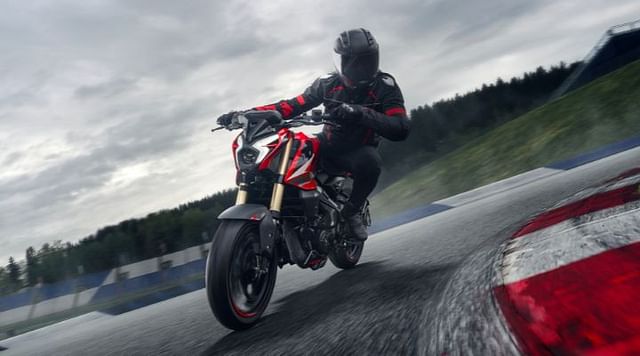
We expect the braking to certainly make a difference, not only in terms of longevity but also in consistency over a wide range of conditions. We can also expect the radial tyres to make a difference in terms of handling, but it should not be too much, since the bike is likely going to be a daily driver for most buyers who will not push it to its limits on an everyday basis.

The Speed 400 comes with a chassis that is beautifully tuned; it absorbs road imperfections with ease and does not transfer much onto the rider. While it does weigh more than the Duke, its compact dimensions make it more agile and nimble when wiggling through traffic. The handlebar also feels just about right and is spread beautifully. It also leans in very well, and it won't leave you second-guessing when navigating corners.

This brings us to the 390 Duke, which has always been a sharp handler, but in this generation, its ride quality has improved, and tbe difference can be felt when dealing with bad roads and bumps in the city. It is not bone-jarring anymore, unlike its predecessors, but having said that, it prefers being ridden hard and fast, and you would do well to gain some experience and skills before pushing this bike hard.
The differences can be felt thanks to a completely new trellis frame in its third-gen guise. The open-cartridge USD forks come with five-click compression and rebound adjustability, and the rear gets an offset monoshock with five-click rebound and ten-click pre-load adjustability.
2025 Bajaj Pulsar NS400Z Vs KTM 390 Duke Vs Triumph Speed 400; Features On Offer

It is the 390 Duke that leads the pack here in terms of equipment. Apart from the connectivity bits, it also comes with cornering ABS, cruise control, a Supermoto mode to turn off the rear ABS, launch control, a 5-inch TFT display with smartphone connectivity, turn-by-turn navigation and track mode. Also on offer are three riding modes, a bi-directional quickshifter, ride-by-wire, an optional 820 mm seat, and a Type-C USB port among other things.

The Pulsar NS400Z continues to offer things such as dual-channel ABS, ride-by-wire, four ride modes, a slip-and-assist clutch, an LCD instrument cluster with bluetooth connectivity, navigation, music streaming, and call/SMS alerts. Additionally, this update has also added along a sensorless quickshifter accessible in Sport mode only.

Meanwhile, the Speed 400 is the only one here that comes with a semi-digital instrument cluster, and it also misses out on smartphone connectivity. However, the bike comes with dual-channel ABS, traction control, a slip-and-assist clutch, and a gear position indicator. There are no ride modes on this motorcycle, which makes sense, considering that it follows a more classic theme, and that means an unadulterated, natural riding experience.
Also read: Kinetic DX Electric To Get Multiple Variants, Advanced Features; Details
Verdict
At Rs 2.96 lakh, the 390 Duke is easily the most expensive of the three bikes in this comparison, and for that money, you get a very potent performance motorcycle that not only packs the latest electronics, but it also handles sharply and honestly scare a few people.
The Speed 400 comes in at Rs 2.46 lakh, and while it does not pack connectivity features or too many rider aids, it is still properly modern, offering a nicely-tuned powertrain and chassis, all while blending in that retro charm beautifully.
The Pulsar NS400Z's latest update focuses on improving performance and handling, and whether or not it actually does that is something we will find out in our review soon enough. However, at Rs 1.92 lakh, it is easily among the most affordable motorcycles in the 400cc category one can buy today, and it fits with the Pulsar ethos of offering performance at an affordable price tag, while also equipping it with features.











